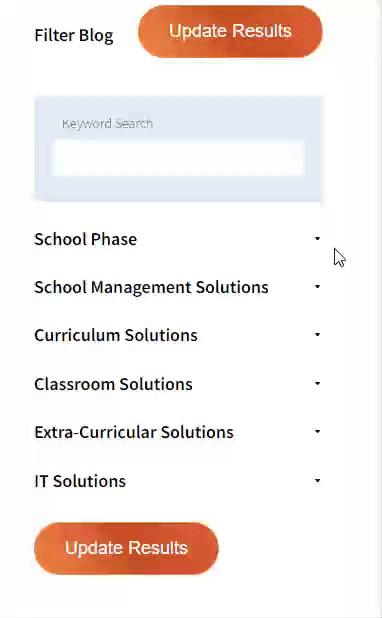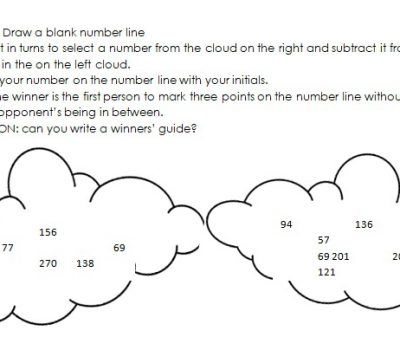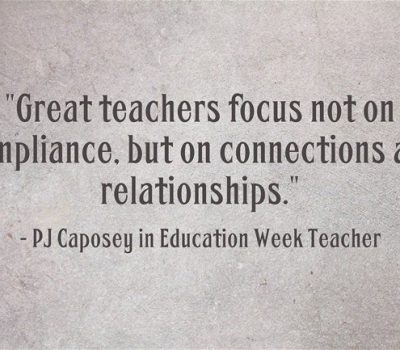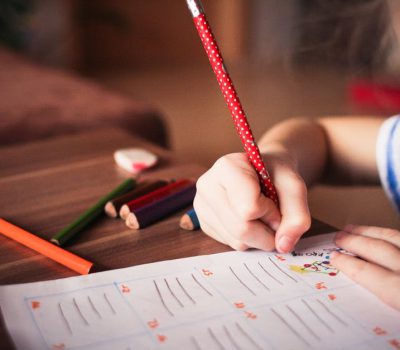


Our team sorts through all blog submissions to place them in the categories they fit the most - meaning it's never been simpler to gain advice and new knowledge for topics most important for you. This is why we have created this straight-forward guide to help you navigate our system.


And there you have it! Now your collection of blogs are catered to your chosen topics and are ready for you to explore. Plus, if you frequently return to the same categories you can bookmark your current URL and we will save your choices on return. Happy Reading!
The classrooms of today are catering to a very different audience to those of 50 years ago. They are expected to incorporate different content and approaches and adapt to the rapidly changing developments in technology and policy. This is why learning spaces, above all, should be flexible, fluid and learner focused. If the space becomes a part of the learning experience that changes and grows with the learning journey then it can be a huge asset to teachers and learners.

Many schools retain an art gallery approach to classrooms. The best work is put prettily on display and teachers and TA’s spend hours creating art work that should adorn the walls of the Louvre rather than a wall in year 3! In some cases this work remains on display for months. What is the impact once it has already been viewed? What about those whose work does not “look” the part? What is the outcome of all that work by professionals?
Here are my top tips for a fluid, multipurpose learning space:
– Transforming. Try and find ways to use different aspects of your space for multiple use. Can desks be white boards? Can walls be chalk boards or visa versa? This saves getting out and packing away. It also means that questions and ideas can be recorded for posterity. I like to have a camera handy so that I can “snap” learner responses on their desks as formative evidence!
– Flat pack Ok. Maybe not completely flat pack but how long does it take you to clear a large, multipurpose area in your classroom that is free of furniture or clutter? Why not time it? If it takes longer than a couple of minutes then you might want to think about tables that fold away or chairs with tables attached. Why? Because at times we want to engage individuals and at others we want collaboration and group focus. Flexibility of space helps with this.
Engaging – Please note: There is a difference between engaging and over stimulating. The walls of your classroom do not need to provide answers or an entire dictionary of definitions. Instead they need to keep learners thinking about the subject. They should challenge and stretch. This should be something that changes frequently. It does not, however, need to be a work of art.
– Interactive I know some people will disagree with me on this point and say that this counts as “distraction” and yes, interaction needs to be used carefully. I have found that the use of a wall spinner, lift up or pop up sections that ask learners questions or even just a “thought of the week” can be useful. Especially if learners are encouraged to respond. I use a “What do you want to know” board for learners to ask anonymous questions. These may or may not relate to learning. (yes, you may get some choice illustrations from older year groups but at least it’s not etched into a desk or in sharpie on the toilet wall!). I like to challenge learners with philosophical questions, conundrums or lockbox challenges. This can be as part of the lesson or simply something that every user of the space can contribute to.
– Working walls If you want to display work then make it USEFUL to your learners. I have used both the Inquiry and the design cycle to create working walls. Evidence of student work (or photos) is placed at the point in the cycle that they’re working at on the wall. Learners can visually see where they are going next and what they have achieved. This is incredibly useful when giving feedback, in parents evenings or for peer/self assessment.
These solutions might not be the most beautiful (although there is nothing to stop them being gorgeous if you are a creative soul!) but they are learner and learning focused. They look to the future of learning where spaces need to be flexible and expand and adjust to meet the changing needs of a system in flux.
They’re also fun, create a feeling of purpose and engagement and move away from the Victorian ideology of desks in rows in a box shaped room. We may not be able to change the fundamental blueprints of our structure but we can create space for learning to grow.

The author

Read more

Read more

Read more

Read more

Read more

Read more

Read more

Read more


Are you looking for solutions? Let us help fund them! Nexus Education is a community of over 11,000 schools that come together to share best practise, ideas and CPD via online channels and free to attend events. Nexus also offers funding to all school groups in the UK via nexus-education.com


Established in 2011, One Education is a company at the heart of the education world, supporting over 600 schools and academies. Our unique appeal as a provider is in the breadth and synergy of the services we offer, supporting school leaders, teachers and support staff to achieve the best possible outcomes for their pupils and staff.

School Space is a social enterprise that has empowered schools for over 12 years through their profitable and hassle-free lettings services. So far, they’ve generated over £5 million in revenue for education, helping to connect over 200 schools with their local communities.


Unify is an online sales and marketing tool that allows users to create tailored personalised documents in moments.


There’s nothing special about the energy we sell. In fact, it’s exactly the same energy as all our competitors provide. But there is something special about the way we do it. Where others complicate the process, we simplify it. Where others confuse customers with hidden terms, we’re an open book. And where others do all they can to make as much money from their customers as possible, we do all we can to make as little. Everything we do, we do it differently. Our customers are a privilege. One we’ll never take advantage of.


Securus provide market-leading monitoring solutions to safeguard students on ALL devices both online and offline. We also offer a full monitoring service, where we carry out the monitoring on behalf of the school, freeing up valuable staff resources. From the smallest school to large MAT groups, Securus offers safeguarding protection for all!


Bodet Time offers dedicated solutions to education through lockdown alerts, class change systems, PA and synchronised clock systems. Improving time efficiency of the working and school day; ensuring safety through lockdown alerts; increasing communication with customised broadcast alerts.


Robotical makes Marty the Robot - a walking, dancing coding robot that makes programming fun and engaging for learners as young as 5. Our robots come with a full Learning Platform that has complete teaching resources, to make lesson planning a breeze.